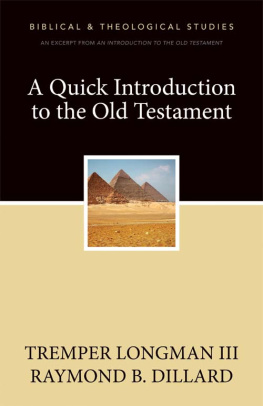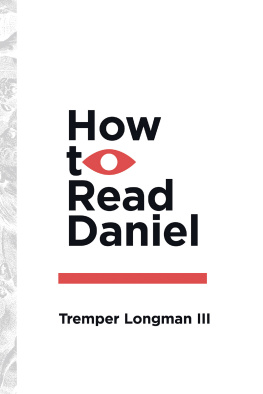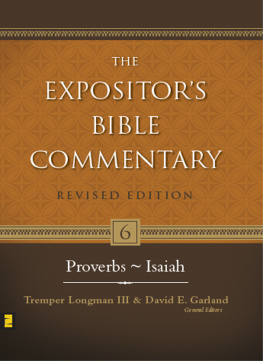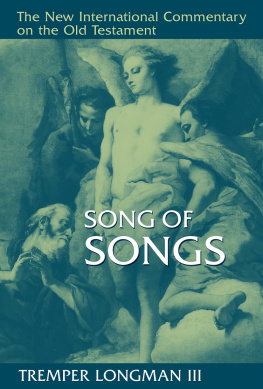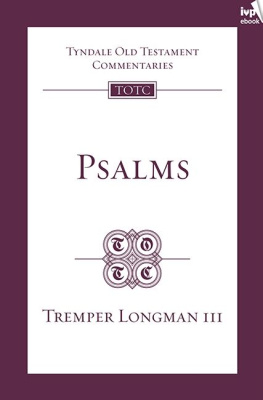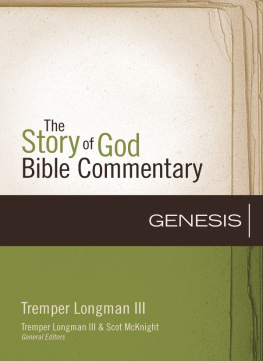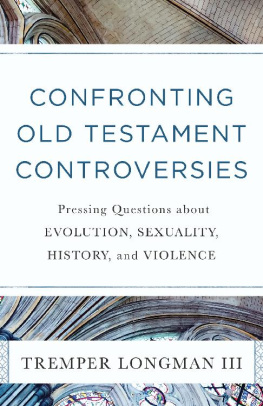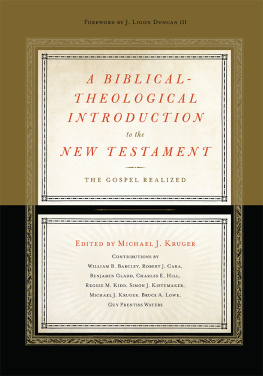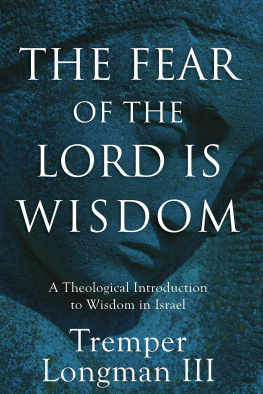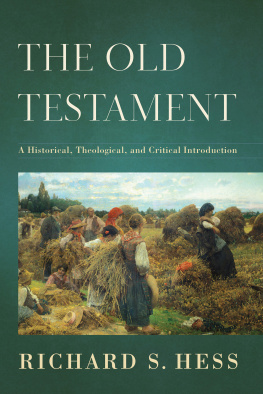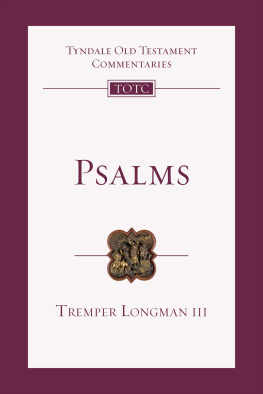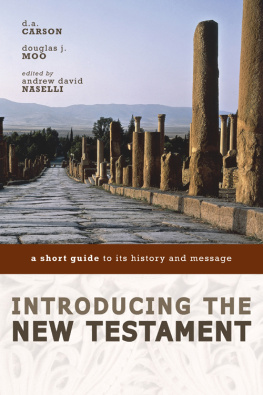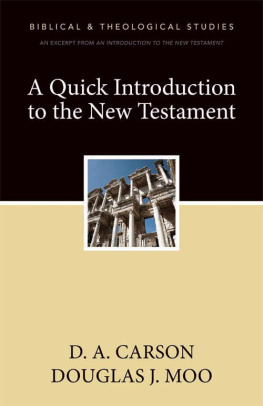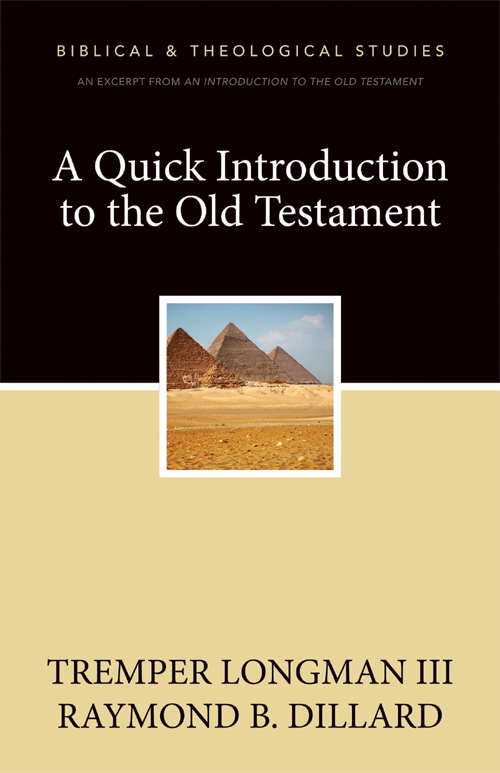ZONDERVAN
A Quick Introduction to the Old Testament
Previously published in AN INTRODUCTION TO THE OLD TESTAMENT
Copyright 1994, 2006 by Tremper Longman III and Raymond B. Dillard
All rights reserved under International and Pan-American Copyright Conventions. By payment of the required fees, you have been granted the non-exclusive, non-transferable right to access and read the text of this e-book on-screen. No part of this text may be reproduced, transmitted, down-loaded, decompiled, reverse engineered, or stored in or introduced into any information storage and retrieval system, in any form or by any means, whether electronic or mechanical, now known or hereinafter invented, without the express written permission of Zondervan.
EPub Edition JANUARY 2012 ISBN: 978-0-310-49643-4
Requests for information should be addressed to:
Zondervan, Grand Rapids, Michigan 49530
The Library of Congress has cataloged the original edition as follows:
Longman, Tremper.
An introduction to the Old Testament / Tremper Longman and Raymond B. Dillard.Rev. ed.
p. cm.
Rev. ed. of: An introduction to the Old Testament / Raymond B. Dillard and Tremper Longman. c1994.
Includes bibliographical references.
ISBN-13: 978-0-310-26341-8
ISBN-10: 0-310-26341-7
1. Bible. O.T.Introductions. I. Dillard, Raymond B., d. 1993. II. Dillard, Raymond B., d. 1993. Introduction to the Old Testament. III. Title.
BS1140.3.L66 2007
221.61dc22
2006005249
All Scripture quotations, unless otherwise indicated, are taken from the Holy Bible, Todays New InternationalVersion. TNIV. Copyright 2002, 2004 by International Bible Society. Used by permission of Zondervan. All rights reserved.
Scripture quotations marked NIV are taken from the Holy Bible: New International Version. NIV. Copyright 1973, 1978, 1984 by International Bible Society. Used by permission of Zondervan. All rights reserved.
Any Internet addresses (websites, blogs, etc.) and telephone numbers in this book are offered as a resource. They are not intended in any way to be or imply an endorsement by Zondervan, nor does Zondervan vouch for the content of these sites and numbers for the life of this book.
All rights reserved. No part of this publication may be reproduced, stored in a retrieval system, or transmitted in any form or by any meanselectronic, mechanical, photocopy, recording, or any otherexcept for brief quotations in printed reviews, without the prior permission of the publisher.
Cover design: Ron Huizinga
Contents
ORIENTATION
Bibliography
B. W. Anderson,Understanding the Old Testament (Prentice-Hall, 1975); G. L. Archer,A Survey of Old Testament Introduction (SOTI; Moody, 1964); W. Brueggemann,An Introduction to the Old Testament: The Canon and ChristianImagination (Westminster John Knox, 2003); B. S. Childs,The Book of Exodus (Westminster, 1974); idem, Introduction to the Old Testament as Scripture (IOTS; Fortress, 1979); P. C. Craigie,The Old Testament: Its Background, Growth, andContent (Abingdon, 1986); J. G. Eichhorn,Einleitung in das Alte Testament, 3 vols. (Leipzig, 1780 83); O. Eissfeldt,The Old Testament: An Introduction (OTI; Oxford, 1965); R. H. Gundry,Jesus the Word according to John the Sectarian: A Paleofun-damentalistManifesto for Contemporary Evangelicalism, Especially Its Elites, in NorthAmerica (Eerdmans, 2001); R. K. Harrison,Introduction to the Old Testament (IOT; Eerdmans, 1969); O. Kaiser,Introduction to the Old Testament (Oxford, 1975); Y. Kaufmann,The Religion of Israel (University of Chicago Press, 1960); A. L. Laffey,An Introduction to the Old Testament: A Feminist Perspective (Fortress, 1988); W. S. LaSor, D. A. Hubbard, and F. W. Bush,Old Testament Survey (OTS; 2nd ed.; Eerdmans, 1996); R. Rendtorff,The Old Testament: An Introduction (OTI; Fortress, 1986); A. Rivetus,Isagoge, seu introductio generalis, ad scripturam sacram veteris etnovi testamenti (Leiden, 1627); J. A. Soggin,Introduction to the Old Testament (IOT; Westminster, 1976); M. Sternberg,The Poetics of Biblical Narrative (Indiana University Press, 1985); E. J. Young,An Introduction to the Old Testament (IOT; Eerd-mans, 1949).
The Genre
The genre of introduction has a well-established place in the field of Old Testament studies. It is one of the first volumes that serious students of the Bible encounter in their quest to understand the text. Its very title connotes the preliminary nature of its subject matter. As E. J. Young commented, the word derives from the Latin introducere that means to lead in or to introduce (1949, 15).
It is thus the purpose of this introduction, like all introductions, to acquaint the reader with information that is important to know in order to read the books of the Old Testament with understanding. In more contemporary terminology, our goal is to provide the student with resources needed to achieve reading competence.
Many introductions have been written during the history of biblical studies. Since the history of the genre may be found elsewhere (see Young 1945, 15 37; Childs 1979, 27 47), it will not be repeated here. Nevertheless, a few of the major transitional points will give the reader a feel for the evolution of the genre and provide a framework for the present volume.
The church fathers did not write what we would recognize today as introductions to the Old Testament, but they did deal with topics that would later occupy volumes that go by that name. Thus Jerome, Augustine, Origen, and others wrote concerning authorship, literary style, canonics, text, and theological issues. Their comments, however, may be found in scattered locations and not in any single volume.
Childs and Young disagree over the date of the first truly modern Old Testament introduction. Young attributes it to Michael Walther (1636) because of his distinction between matters of general and special introduction (see below). Childs, on the other hand, dates it later with J. G. Eichhorn, whose three-volume Einleitung was first published between 1780 and 1783. The difference reflects the theological disagreement between Young, who as a conservative acknowledges the work of Walther, who held a high view of inspiration, and Childs, a critic (though moderate), who requires the advent of the critical method to find the first truly modern, historical critical Introduction (1979, 35).
In the twentieth century the introduction continued its evolution along the lines of the development of the discipline as a whole. Thus, after Julius Well-hausen introduced the documentary hypothesis, all succeeding introductions had to take his theory into account (see Historical Background below). The same is true with later developments, including form criticism, tradition criticism, and, more recently, the literary approach.
While mainstream introductions agree in their acceptance of critical methodology, there are differences among them. These differences may be observed in a sampling of the introductions that are still in use. The introduction by Eissfeldt represents classic German criticism. Much of his work is devoted to reconstructing the history of the composition of the individual sections of the Bible. Although his work is idiosyncratic in detail, Eissfeldt devotes detailed attention to a source analysis of the Pentateuch. In the critical tradition, Rendtorff adopts a somewhat different approach in that he follows in the line of Noth and von Rad to present a more historical analysis of the Pentateuch. B. S. Childs, on the other hand, brackets many of these questions of the historical development of the individual books in order to delineate the canonical function of the books (Brueggemann 2003).

